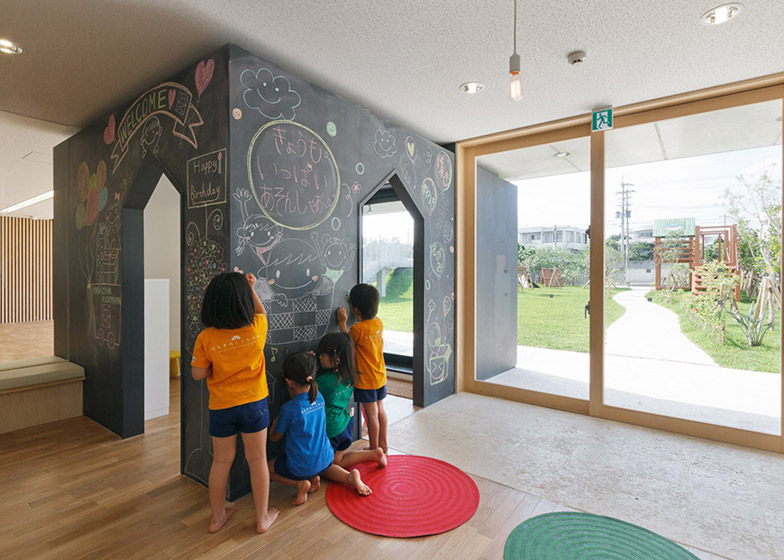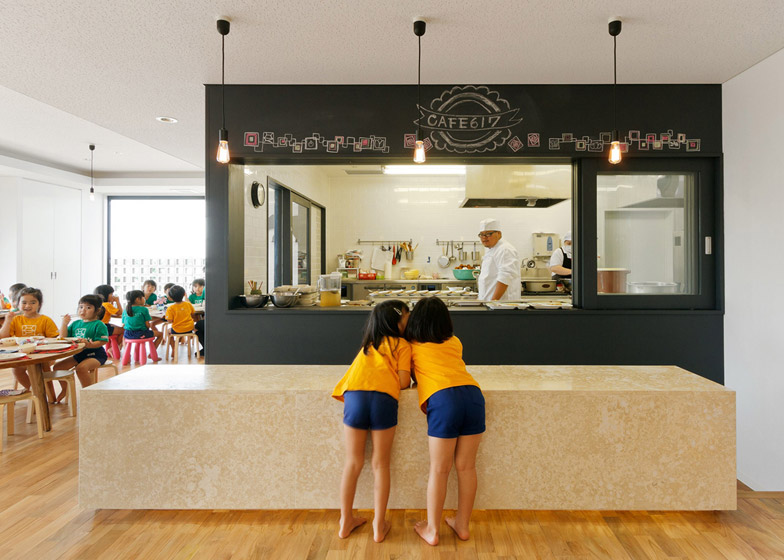The Japanese island of Miyako-jima is prone to frequent typhoons, so this kindergarten was planned by studios Hibino Sekkei and Youji no Shiro to offer children protection from heavy rain and flying debris (+ slideshow).
Located approximately 400 kilometres off the coast of Taiwan, Miyako-jima is the largest and most populous of the Miyako Islands. Tasked with designing a nursery there, architecture office Hibino Sekkei and sister company Youji no Shiro, which specialises in design for children, had to consider weather and climate conditions before anything else.
"Miyako-jima belongs to a subtropical oceanic climate," said architect Taku Hibino. "The building is required to be closed for making shade, and also open for ventilation, because the hot and humid climate causes many typhoon attacks."
Responding to this, the architects designed a two-storey structure with a steel-reinforced concrete framework, created to endure a "typhoon invasion".
Walls are clad in red ceramic tiles, designed to match the red roofing materials typical to the region, while windows and courtyards are framed by screens and canopies constructed from hollow concrete blocks.
"Concrete blocks with holes, a typical building material from this area, offer protection from flying objects and shut out the sunlight while keeping views and wind," said Hibino.
Named Hanazono Kindergarten and Nursery, the building is long and narrow in plan. At one end is a garden featuring playground apparatus and a cave-like grotto, as well as more secluded courtyards and terraces.
The ground floor was designed as one large continuous space, allowing it to accommodate a variety of activities.
At the north end, the main activity space and an art studio are housed in one room, separated only by a folding partition. Glass doors at both ends of the room allow play to spill out to the lawn and a central decked courtyard.
The dining room and kitchen are located across the courtyard, and open out to a narrower deck and garden that faces south.
"It became one large space and wind blows through when you open the windows," added the architect.
Other features on this level include a structure called the shoebox corner, which extends through the facade so that one half of it is outside. Its walls are painted with blackboard paint so children can make chalk drawings on its surface.
Upstairs, there are six rooms where children can stay overnight. These have been painted in different vibrant shades and some include wooden mezzanines accessed by ladders.
Photography is by Studio Bauhaus/Ryuji Inoue.























